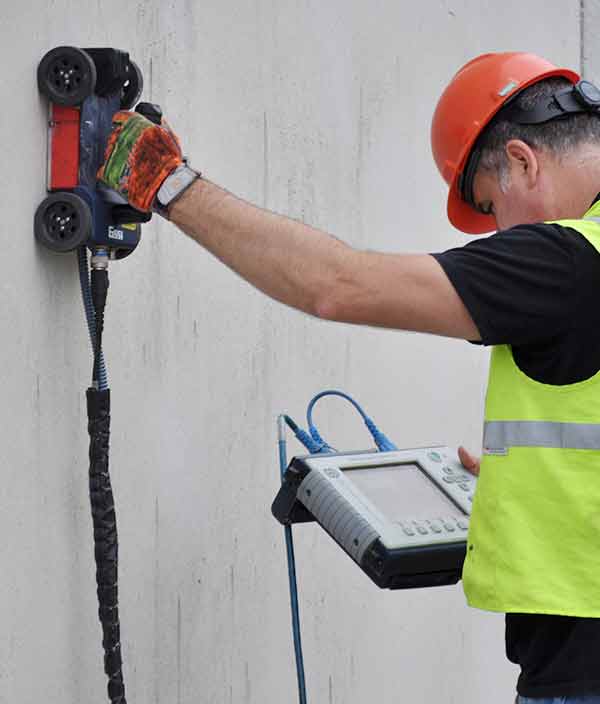Why Pick RainierGPR Concrete Scanning for Accurate Subsurface Analysis
Why Pick RainierGPR Concrete Scanning for Accurate Subsurface Analysis
Blog Article
The Relevance of Accurate Concrete Scanning in Finding Underground Hazards
The capability to precisely spot and map these underground dangers is not merely a matter of comfort yet a critical aspect of ensuring the safety and security of both construction workers and the integrity of the job itself. By releasing innovative scanning technologies and methodologies, professionals can discover hidden dangers, prevent costly problems, and eventually pave the means for smoother and much safer building endeavors.
Advanced Scanning Technologies for Discovery
Cutting-edge radar systems are changing the field of underground detection by offering unparalleled accuracy and efficiency. These advanced scanning modern technologies make use of ground-penetrating radar (GPR) to develop thorough pictures of subsurface frameworks, providing insights into what lies beneath the surface with impressive clearness. By giving off high-frequency pulses right into the ground and gauging the representations, radar systems can identify variations in product structure and find underground hazards such as cable televisions, pipes, and gaps.
Among the key benefits of these innovative radar systems is their non-invasive nature, enabling extensive examinations without causing damages to the existing frameworks. This not only makes certain the safety of the surrounding atmosphere however additionally decreases the need for expensive repairs or disturbances to continuous construction tasks. Furthermore, the real-time data given by these scanning technologies enables fast decision-making and boosts total task efficiency.
Relevance of Subsurface Mapping

Precise subsurface mapping assists in preventing expensive problems to existing underground framework, decreasing the danger of accidents, and preserving task timelines. It makes it possible for project supervisors to make informed choices concerning site planning, equipment deployment, and source allocation. In addition, subsurface mapping enables far better control amongst various teams dealing with a job and aids in abiding by regulative demands connected to underground utility detection.
Mitigating Threats in Building And Construction Jobs
Efficient threat reduction strategies are important for making certain the success and safety of building and construction projects. One vital element of mitigating threats in building and construction tasks is thorough preparation and analysis at the first phases.
In addition, establishing clear interaction networks among all task stakeholders and guaranteeing rigorous adherence to safety protocols are crucial elements of danger mitigation. By proactively applying robust risk mitigation methods, building jobs can minimize hold-ups, price overruns, and safety occurrences, eventually leading to effective project outcomes.

Stopping Pricey Damages and Delays
To reduce financial losses and task setbacks, efficient approaches should be implemented to stop costly damages and check my source delays in building tasks. Identifying click here for info these obstructions early on aids in planning the project layout much more successfully and avoiding prospective problems during excavation.
In addition, purchasing training programs for building workers on the value of concrete scanning and safe excavation practices can significantly decrease the risk of crashes and delays. Clear communication networks in between task supervisors, engineers, and on-site workers are likewise vital to guarantee that everyone is aware of the potential hazards and adheres to the required protocols to stop costly problems. By focusing on positive steps like concrete scanning and promoting a society of security and recognition, building and construction jobs can reduce the monetary influence of unforeseen below ground obstructions and avoid pricey delays.
Ensuring Safety of On-Site Personnel
By focusing on proactive procedures such as extensive training programs and clear interaction channels, building projects can guarantee the security of on-site workers in the middle of the potential hazards found with concrete scanning. Proper training furnishes employees with the knowledge and skills required to navigate building websites safely, particularly when hazards are determined through scanning processes. Training should cover threat acknowledgment, emergency procedures, and the appropriate use of personal protective equipment to minimize threats effectively.
Furthermore, developing clear communication networks is important for distributing details concerning identified hazards immediately. This makes sure that all on-site workers are mindful of prospective dangers and can take required safety measures to avoid crashes. Routine safety rundowns, tool kit talks, and regular updates pertaining to scanning results aid keep everybody educated and aggressive in preserving a safe workplace.
In addition, carrying out stringent adherence to safety and security methods and laws, carrying out routine safety and security audits, and cultivating a society of safety consciousness amongst workers are essential parts in making certain the wellness of on-site personnel during construction tasks - RainierGPR Concrete Scanning. Aggressive safety and security measures not only safeguard employees from injury but likewise contribute to the overall success and efficiency of the task
Final Thought
Making use of advanced scanning innovations and subsurface mapping aids alleviate dangers in building and construction jobs, stopping costly problems and hold-ups. It is essential for construction firms to focus on the use of accurate scanning techniques to lessen possible threats and make certain a smooth building procedure.

By proactively executing durable threat mitigation approaches, construction projects Discover More Here can minimize hold-ups, price overruns, and safety and security events, inevitably leading to successful job outcomes. - RainierGPR Concrete Scanning
To minimize economic losses and job obstacles, effective techniques have to be implemented to stop costly problems and delays in building and construction tasks. By focusing on proactive actions like concrete scanning and promoting a culture of safety and understanding, building projects can decrease the monetary impact of unanticipated underground obstructions and prevent costly hold-ups.
By prioritizing aggressive measures such as extensive training programs and clear communication channels, building and construction projects can make sure the security of on-site employees in the middle of the prospective dangers detected via concrete scanning. Utilizing innovative scanning modern technologies and subsurface mapping assists minimize risks in construction jobs, preventing costly problems and hold-ups.
Report this page